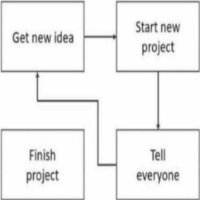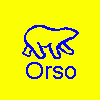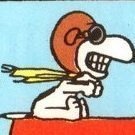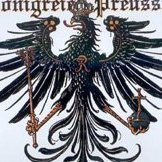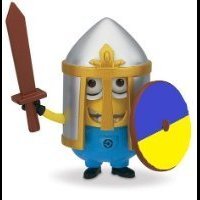Search the Community
Showing results for tags 'WW1'.
-
Hallo This is my Friedrichshafen FF 33 E in 1/48 from Techmod. Here I also have etched parts from Part. Now, I started today with this subject. Now, I am playing with the idea to use the etched parts also for rigging. The point is, that holes have to be made at all rigging parts. The other option is to work without etched parts in my already well proved version. See example on my Gotha G.1. On the right plastic part of the fuselage I have a detail. The opening for the front cabane strut is too big, and so I reduced it by filling it. Here I have to drill later on for the cooling piping. So far Happy modelling
-
General question, if there are specifics please do share! Am I right in assuming the cylinders were cast iron/steel? Or aluminium with a steel sleeve? Heads and crankcase in aluminium?
- 17 replies
-
I started on some supply sledges. 1/72 scale, about 55 mm long scratch built. Now I need a Mk.IV tank to tow them.
-
I bought a resin kit of Hedi. It seemed Ok compared to pictures. It is clearly based on parts from Emhar's A7V kit wich suits me well. I had seen that there were a couple of things that needed to be fixed. The doors should actually be flush with the hull sides and I could have let it pass but the hinges are placed incorrectly on one side of the body. I was impressed by the handles at the doors though. However, I discovered that the "turrets" in the corners are too low and I felt that it was too much work to trying to fix that. It was time to bring out some plastic card. Coming this far, everything felt wrong. Things do not fit together. Only one thing to do. Tear it apart. New sides are made. I didn't want to make new fronts so I had to splice in plastic instead. Now new roofs must be made. The "guillotine" is a great help in cutting multiple parts for the grilles in the roof. But things still don't fit so everything is torn apart and new fronts has to be made anyway. Now nothing will remain of that first attempt of the build. Time to tear apart the the other end and rebuild it.
- 26 replies
-
- 16
-

-
This is my effort to build Wingnut Wings’ post war F.2b. Of course it makes up into a beautiful model and is pretty straight forward, although I think next time I would add the engine firewall after fitting the cockpit. I used ezline for the rigging without any turnbuckles this time. I think I’m just about at my limit in terms of finish here, so would welcome suggestions on how to improve. Anyhow, on to the pics:
-
Hi all - I have decided to start another 1/48 DVa. Having built several before, this time, I have gone with the Revell boxing, which is a re-box of the Eduard kit. Revell have moulded this kit in a very light grey and slightly brittle plastic. Reflecting upon the fact that a tightly cowled Albie hides all of its secrets, I decided to bite the bullet and tackle something that i've wanted to do for a while; an un-cowled DVa. The first thing to do, unsurprisingly, was cut off the kit cowls, and thin down the fuselage sidewalls. I sanded off all of the interior detail, and thinned down the interior of the nose section with a dremel: Now, the real challenge... how do deal with those curves, and build all of the distinctive formers? Having sanded the fuselage, it was now not simply a round symmetrical section that I could use. I also really didn't want to make up each frame painstakingly by hand. I decided that I would use my Silhouette Portrait cutter to cut the formers from thin plastic. That would also allow me to design the lightening holes and have them cut out cleanly. To do this, the first thing I did was roughly get the shape of each frame using thin plastic. Some of the shapes were going to be a bit 'odd', due to the way that the plastic had been sanded, creating shapes / contours that weren't quite oval (mainly at the point of the firewall, as you can see I needed a slightly odd shape here): This then allowed me to scan the shapes into the Silhouette drawing program, and trace out each shape. The appropriate details were then added: I then used the Shilhouette Portrait cutter to cut the shapes from 0.010" plastic. I had to use this plastic thickness as anything thicker would have been too hard to cut. This plastic was too thin in and of itself for each frame, so in order to provide some rigidity I cut two pieces for each frame and glued them together: I then had the frames I needed to create the main structural elements: Next was re-adding the structural detail in the fuselage halves: And here it all is, VERY roughly placed within the fuselage. It may need a couple of adjustments here and there, but I think it will all work. And proof the fuselage halves still come together... I now have the basis to commence the rest of the interior. Phew...! Happy to take comments, tips and feedback. Cheers again! BC
- 16 replies
-
- 22
-

-

-
Sopwith Pub RFC The kit is WNW. Scale 1/32. As usual a good kit, an instruction with some weird instruction steps. So I had to memorize it and built it straight way. The rigging was no problem at all, since we developed a good technique already. You can find all in the forum anyway. In summery it took me 2 months beside my job. Happy modelling
- 13 replies
-
- 41
-

-
The kit is WNW. Scale 1/32. As usual a good kit, an instruction with some weird instruction steps. So I had to memorize it and built it straight way. The rigging was no problem at all, since we developed a good technique already. You can find all in the forum anyway. In summery it took me 2 months beside my job. Happy modelling
- 11 replies
-
- 54
-

-
Ahem! after a false start of this thread in the wrong place (Sorry Mods)🥴 Here's a quick update on what I've been up to I bought a dual combo of Eduard's lovely Nieuport 17 and started one as my 'first' model, but after a few goofs I ended up using it as a test bed to get used to cleaning up plastic, painting and decaling before having a proper go at the DR1. Since the early Nieuport was sitting there mocking me I decided to have another go at one using the second kit. . . . I'll spare you the blow by blow commentary on these, but the struts and u/c are all scratch built from sanded brass rod and I added a few finer details to the cockpit (not that any will be seen) I beefed up the cylinders with some jewellery wire. Wing struts ahd the detail sanded off and were then subjected to a session with the sanding stick to get them thinner (they may be too thin so I'll need to go easy when rigging this one) Painting is all in acrylics (Vallejo air mainly) and I'm gradually learning how to fight the airbrush to do what I want. Enough rattle here are the pics Paul
-
Hello all – here’s another completion just off the bench; a ‘What if” Fokker Dr.1 seaplane, based on the 1/48 Eduard Dr.1 kit. This one was just for a bit of fun (so apologies to those who aren’t fans of ‘what if’ subjects). I added floats, extended the cowl to fit a Oberursel Ur.III twin row rotary engine (from Small Stuff; this engine is a kit in itself), added a vertical stabiliser, added some cockpit details, and replaced the guns with some from Gaspatch. I also scratch built the beaching trolleys and trestles. The German naval lozenge is from Aviattic, and decals are from the Eduard kit and the spares box. Some in-progress pics (the full build log is here - https://forum.ww1aircraftmodels.com/index.php?topic=12812.0 ) This was an enjoyable little project, and looks rather unique in the display cabinet. Thanks for looking! Cheers, BC
- 33 replies
-
- 64
-

-

-
Hi, guys... It's been a while since I posted here on Britmodeller, so I thought you might like to see the latest addition to my collection. This is the wonderful Gotha G.IV kit from Wingnut Wings. It's a large kit when finished, with a wingspan of almost three feet, but like any other model, spend a little time and you'll likely end up with a good outcome. So, to begin with, I painted and assembled the fuselage floor, bulkheads and cockpit area. Everything you see in this first image comes from the kit and I especially liked the seatbelts, oxygen bottles and the instrument decals, all of which bring great realism to the model. The floor was given an enamel undercoat of pale khaki, then overpainted using burnt sienna oil paint from the Cass Art range. I was very pleased with the wood effect on the floor and bulkheads. In this next photo, the framing around the cockpit has been added in and its rigging shows up well. The 'steering wheel' control mechanism is well produced, as are the integrally-moulded fuselage frames, although some of the cockpit areas in my kit had a lot of ejector pin marks. These were in tricky areas in some instances, but all were easily enough removed. The majority were on the right side of the fuselage, so had to be addressed, as they would have been very prominent if left unattended. I took this photo after the fuselage was closed up, and you can see some of the detail in the gunner/bomb-aimer's forward position including the bomb release mechanism and the oxygen bottle. Once I was happy with the internal areas of the fuselage, I moved on to building the engines, leaving one covered and the other without its engine panels in order to show the detail. The central section of the bottom wing was also painted up and the walkways painted metallic and then blackwashed to give a bit of a 'worn' look. I liked the fine detail on the radiator grills and the exhaust pipes came up very well with their grungy appearance; this was oil paint used again, and blackwashed. After varnishing the fuselage, the relevant decals were attached and the external fuselage rigging - which extends to the tail and connects with the control surfaces - was added on at this point and later tidied up when the elevators and rudder were attached. The few transparent pieces included in the kit are small, but are very clear and fit well. Some additional blackwashing was applied to both the panels and small fitments on the fuselage sides, and the engine cowlings. Moving on to the wings, both upper and lower surfaces were painted in the dark grey-blue, with the exception of the underside of the top wing, which like the engine covers, struts, wheel hubs and fuselage and nose panels, were left in the extremely pale blue shade, almost an off-white tone. Adhesive tape was added to cover the wing ribs after a whilte undercoat had been applied, thereafter being oversprayed in dark brown in a non-uniform manner before the tapes were removed. When this happened, the original white undercoat was again uncovered on the ribs, and these were later given an overspray in the relevant camouflage colour... ...which in turn, was a process that was helpful in drawing back any excess of the brown paint and also helped to remove the white and bring the ribs, generally speaking, back to the appropriate colour. I deliberately left them slightly 'untidy' in their appearance as I felt this gave a good final presentation. Once varnished, the national markings were applied. So, in the following image, you can see the extent of the wingspan with the lower wing sections now in situ; the cabane struts have also been attached. The Gotha's wings had noticeable dihedral and on such a large kit, you may think this would be difficult to effect properly, but the lower wings have the correct dihedral built into them and have quite a bit of 'play' as well, and the top wing, after securing the rather flimsy lower central section into place, rests easily on the cabane struts and engine frame struts without any additional support required at this stage. Now you can see that I have started to attach the interplane struts; I rigged the inner areas between the engines and fuselage first as these are the most difficult to get access to and some of the rigging crosses over other lengths of rigging diagonally and therefore, awkwardly... patience is definitely needed here, and possibly a leather mouthpiece to bite into if/when things don't go according to plan - you don't want to scare the neighbours with aggressive yelling, cursing and swearing at the top of your voice! 🤬 🤣 The cabane struts and each section, moving gradually out towards the wing tips, were rigged in their entirety before moving on to the next. The struts themselves were easily inserted into their location holes due to the 'play' in the wings, and this flexibility was very much instrumental in making the whole rigging process much easier. I resisted all thoughts of turning the kit upside down to complete the rigging under the top wing, instead electing to use two blocks of upholstery foam to support the model while accessing these areas in order to attach the turnbuckles into the leading and trailing edge points. The larger block of foam, which stood about four inches tall, allowed me to tilt the model forward onto its nose, thus giving better access to the trailing edge. The thinner strip of foam was used to support the undercarriage and raise the front of the kit, thus giving better access to the leading edges. In the latter process, it's good to remember to position the tail against something solid in order to support the model and minimise the likelihood of it slipping off the foam, and this should be done before attaching the tail control surfaces. All of the above negates the requirement to move the model around as it takes on more and more weight and size, and also reduces the need, in my opinion, to go boring right through the upper wing to draw rigging through before secuing it. I have seen this done online and admire modellers who use this method, but I wouldn't have confidence to try that, and given the rarity and cost of obtaining the model nowadays, I feel my method is every bit as effective. The rigging was completed using elasticated thread and the turnbukles came from the excellent GasPatch range. These last few photos show the model in its final stages of construction. All control surfaces are attached and rigging finished; upper wing fuels tanks, MG mounts and the guns themselves, the bombsight and all external ordinance has been added, and only a space in the cabinet needs to be found! All enamel paints used were from the Humbrol range and markings largely from the WnW kit itself, although the 'Lori2' markings were taken from the Pheon decals after-market offering for this model. So, I hope you have enjoyed seeing the photos from my build. There is a more extensive build article which you can access here: https://imodeler.com/groups/imperial-german-air-service-luftwaffe-group-build-may-1st-1910-to-present-day/forum/topic/wnw-gotha-g-iv-1-32-scale/, and I've made a YouTube video which you may also find interesting, available to view here https://www.youtube.com/watch?v=yQqvVuxKUyM. Thanks for looking in... ;-). Regards, Paul
- 15 replies
-
- 60
-

-

-
The Aviatik 30.40 was a prototype Austro-Hungarian interceptor from 1918 and this is my build of the Alliance Models 1/48th limited run kit. I have always thought this to be an attractive little aircraft especially with it's interesting two tone grey low-vis camouflage. There only being a few parts in the kit I was hoping for a straight forward build, but as is often the way with limited run kits there was a lot more work than there appeared to be at first glance. I added as much detail to the cockpit as I could based on photos from similar Aviatik aircraft from the period and as usual little of it can be seen now. Seat belts are from Eduard and a couple of generic dials were added to the instument panel. All the flying surfaces were sanded to remove the exaggerated rib detail and to thin the trailing edges. The distinctive washout on the ailerons was added by gently heating them and bending into shape. The engine was replaced by one I found in the spares box. With some additional wiring and plumbing although not 100% accurate it's passable, especially as it's mostly hidden behind the cowling. The struts supplied were rather thick and over sized so these were replaced with brass Strutz material, soldered where strength was required. The spoked wheels are Eduard items robbed from another kit and I drilled out the kit wheels to get the tyres. Not perfect but good enough. The propeller is made from wood veneers. After looking at the photos I realised it wasn't fixed which is why it looks a little crooked in some views. The paint was my own mix of Mr.Color paints. The hardest part of the build was trying to replicate the machined aluminium cowling and panels and I'm still not really happy with the way they turned out. As always critique and advice welcomed. Wayne.
-
Hello everyone – this is my latest completion, the 1/48 Eduard Fokker Dr.1. The kit is painted in the markings of Ltn Hans Koerner, Jasta 19, May 1918. I added some detail to the cockpit, replaced the kit guns with items from Gaspatch, added the telescopic gunsight that Korner fitted to his machine, and shortened the undercarriage struts to correct the ‘sit’ of the model. The rest was out of box. The Fokker streaked camouflage was from Aviattic, and the personal markings from Pheon. This is a lovely little kit which presents minimal problems in construction (save those that were self induced), and was a joy to build. For the build log, see here – https://forum.ww1aircraftmodels.com/index.php?topic=13042.0 Thanks for looking, and feedback always welcomed! Cheers, BC
- 12 replies
-
- 39
-

-

-
I guess it comes as no surprise that I've started with the cockpit. I simply love the wicker seats which come with the kit I think they look superb. Everything falls in its place without any problems so far.
- 10 replies
-
- 15
-

-
I have been working on the Eduard 1/72 Fokker D.VII for a few days on a variant made by Ostdeutsche Albatros Werke (OAW). Very nice little kit, but the Wingnut Wings 1/32 kit guide is a great help in building, which is extremely informative! (Unfortunately, I don't have the the WnW kit, but it can be downloaded from their website.) There has been no problem with the model so far. What I added is part of the trunk’s wire stiffening, which is also visible in the cabin, as well as the visible part of the metal frame structure. It will be the dragon machine, Wilhelm Leusch's Fokker.
- 6 replies
-
- 7
-

-
- WW1
- Fokker D.VII
-
(and 1 more)
Tagged with:
-
Anyone know where I can get a 1/48 or 1/32 scale Royal Aircraft Factory RE.8? I know Airfix do a 1/72 version, but I am not keen on the smaller scale models. Everywhere I look the Wingnut and Aeroclub models are out of stock and production. I have just discovered that my Great Uncle, 2Lt George Strachan Gordon RFC was part of 59 Squadron during WW1 as an Observer/Gunner. I would like to make one in time for 19 Aug 2022, which will be the 105th anniversary of the day he was KIA aged 20. Many thanks for any help. Mike
-
Airfix 1/72 Fokker E.III Eindecker, 105/15, of Ernst Udet
- 12 replies
-
- 48
-

-
Hi, guys... This is my latest build and it's Roden's 1/32 scale Fokker triplane. This is quite a good kit but certainly challenging in places. The fit of the bottom wing was difficult, and I decided to remove the central tab between the wings and add it separately into the lower fuselage, then add in a strengthening spar so that the wings could be re-attached. However, I first had to get over the issue with the parts for the bottom wing's uppersurfaces missing from the box. I thought I could use balsa wood to build up the top surfaces and this worked well. I used some wood filler to smooth out the wood grain on one wing, and standard Humbrol model filler on the other, just as an experiment. Both appear to have worked equally well. Some additional detail was added to the wing leading edges using plastic card, as this detail was evident on the surfaces of the other wings. So, in these images below, you can see the progress of the build. Scrap plastic was carefully heated over a candle and stretched thin, and this was then added into the fuselage interior, after which wood-effect transfers were aded in between the upper and lower areas as they were prominent in the real aircraft. The engine was also put together at this time and along with the various cockpit pieces, all parts were blackwashed prior to installation. Next up, a general 'pale linen' shade was applied to the upper and side surfaces, over which was 'drybrush streaked' pale medium green, then dark green to create the well-known streak camouflage effect on this aircraft. It was applied vertically on the fuselage sides, but diagonally on the wings and upper fuselage. Both shades required two thin coats in order to create some depth. The kit's cowling was replaced using an item from the Aviattic range. And here, the model is now at an advanced stage. The pale blue rear fuselage and tail, and the red cowling, struts and wheel hubs have all been attended to and the markings are now being applied. The aircraft carried the pilot's personal emblem, a swastika with narrow arms, and these were created using items from my spare transfers box. At this time, the swastika was a good luck emblem used by pilots of various nations during the conflict. Additional stencils and various dials were culled from spare WnW transfer sheets. Coming towards the end of the build now, the central and top wings are in place and linked to the wing struts, although the cabane struts have still to be inserted under the centre of the top wing. The guns and propellor are all from the kit and look good after careful painting and blackwashing. Below, this is a good image to show the cockpit detail. The pilot's seat was given a cushion made from a small piece of tissue, wrapped in masking tape which has a slight texture to it, and then trimmed to the shape of the seat. Prior to painting, the 'cushion' was creased and then painted with a thin red and black mix, carefully appying two coats and allowing the black in particular to gather in the creases, thus making it look more authentic. Seat belts were provided from the spares box. The dial for the compass was another item from a WnW transfer sheet. Here on the undersides, the access panel behind the engine and the very thin 'deflector' shield with notches to accommodate the undercarriage struts were ietms not supplied in the kit, therefore were made using thin plastic card. The undersides of the undercarriage aerofoil were not correct for this version, so the detail was filled in and two small rectangles, again from plastic card, were added. Some minimal blackwashing was applied here and on the tailplane hinges, as well as on the added panels behind the engine, where oil often heavily stained this area as a result of escaping from the rotary engine. Some minimal rigging is required between the undercarriage struts and the cabane struts, and I used GasPatch turnbuckles for this task. I especiialy like this photo, as it shows the detail of the replacement cowling very well, and also the leading edge detail on the lower wing which largely compliments the same detail in plastic on the other two wings. An additional fuel tank filler point was opened on the forward fuselage close behind the turnbuckles as only one is provided for in the model All looks good, but... shhh, don't tell anyone the 'Axial' propellor logo is on the wrong way round... if the propellor is vertical, the logo should be readable when standing in front of it, and not upside down... oops! I will do better next time... ;-). And so, the end result. A nice colourful addition to my collection, and thankfully, one that doesn't require too much in the way of rigging. I hope you like the model, and thanks for looking in. If you want to see a short video of the build, you can find it here on my YouTube channel: https://www.youtube.com/watch?v=r61biLArsDU There as also a couple of other videos there of recent builds. Until the next time, keep safe. Regards, Paul
- 10 replies
-
- 27
-

-

-
- WW1
- Fokker Dr.I
-
(and 1 more)
Tagged with:
-
Heroes and Villains. Here’s my 1/12 scratchbuilt WW1 trench scene; “Heroes and Villains”. I decided to have a crack at sculpting figures using Fimo polymer clay. It was a real learning experience and great fun. They’re far from perfect, but being my first attempt at this sort of thing, I’m really pleased with how they’ve come out. When I started, I didn’t think I’d be able to get anywhere near as good as they’ve ended up. Sculpting is really intense and challenging, but with a bit of practice, not as difficult as I thought it would be. Next time I’ll hopefully improve my figures’ heads (necks are a particular challenge for me) and the painting – I’m no figure painter! I wanted to show a dynamic scene that raises questions about our interpretation of who is a hero and who is a villain in war. WIP is here…. Thanks for looking!
- 6 replies
-
- 20
-

-

-
- WW1
- Scratchbuild
-
(and 1 more)
Tagged with:
-
Lloyd C.V Lukgraph 1/32 The model has been really pleasant to build. The woodgrain is Lukgraph's decals. I've added some minor details like the binoculars or the anemometer. The propeller has been laser-cut by my friend Michał Jakś and carved by me. Overall I'm quite happy with the result. I hope to see more Austro-Hungarian subjects coming from Lukgraph.
-
Guess what I'm going to build now!!! So I'm lucky enough to be able to wrap my dirty fingers around the new BE2C from LUKGRAPH. Here are a couple of thoughts and photos. The BE2C is one of those iconic aircraft of the Great War which has not been represented on a 1/32 scale yet. Thie workhorse of the RFC is finally here. The kit is in my opinion the best model by Lukgraph - so far. Well-detailed, with crisply casted resin parts and with a lot of painting schemes, it's going to be a true joy to build. There are both 3D-printed and resin parts, a PE fret, a huge decal sheet and a superb instructions booklet. The 3D printed engine, bomb racks and wicker seats are simply gorgeous! Well done Łukasz! Here are the shots:
-
Hello all 🥳 The construction of the T54 has been delayed a bit 😴, so I have started a new project 😁 For a change, it's not a track, but wheels - 6 to be precise. Besides tanks, I also love building trucks and exotic models that you don't see every day. Today I would like to introduce you to one of my favourite vehicles, the Austin Armoured Car 1918 Pattern by Miniart. I find the WW1 theme at least as exciting as WW2, so there will be more to come.... Ok, now to the model: The box is full to bursting with parts, some of which are very fine and fragile. The connections of the sprues are partly very large which makes it difficult to loosen the parts - beware of the danger of breakage! The soft Miniart plastic is not my cup of tea, some Parts were warped / bent in my kit. But anyway-there is only this supplier for the Austin and as a modeller every new kit is a challenge. If you are interested in the build, I can o highly recommend Andy Moore's report on TMN. From my point of view a very good kit with complete interior and the option to show many doors, hatches and flaps open. Plus nicely detailed wheels and a engine as a model within a model. Maybe not for beginners or people with little patience (sometimes you have to find out by yourself how the parts fit together best), but therefore something special. As usual I will also build a small vignette, hence the title: "Greetings from the front". Enough words and have fun! MD Nice Boxart Many parts inside The decals look good Many fragile small parts that can cost nerves I recommend loosening the parts with a PE saw or rebuilding them. It is very difficult to clean these small parts. The frame parts were bent in my case I have already glued and fixed the largest parts in this step. I will do the fine details on the engine and frame later, so nothing can break off and cleaning is much easier because of the handling on the frame. Of course, you have to study the instructions carefully to see what needs to be done first and what can be left out. The main frame work is done Whenever the glue dries (which it has to do very well with this soft plastic), I prepare new parts for the next steps. some nice references 🙂👌 See you!
- 36 replies
-
- 14
-

-
And it’s done! Here’s my Pierce-Arrow AA truck…. All scratchbuilt using plastic card/rod/tube, with a few brass touches. This is honestly the best fun I’ve ever had model making. For those tempted but scared of scratchbuilding, I’d recommend going for it – it’s not that daunting if you pick a nice, square subject and the sense of accomplishment is stellar. WIP progress can be found here… Thanks to everyone who’s supported me through this build - it's been a blast! Painted with a selection of enamels and acrylics with oils and pastels for weathering. I’ve not quite finished here – I need to do a few little touch-ups like another overall matt coat and drops of shiny stuff for the binocular lenses. I’ll then re-unite this with its diorama and figure – so watch this space! Current top contender for the next scratch is a Mk1 gun carrier with 60 pounder - it'll be a beast!
-
Hello everyone… I’ve had a varied model-making year, covering weekend Airfix aircraft builds, a handful of 1/35 and 1/72 armour types, a bit of diorama and figure sculpting work and so on. The projects that I’ve enjoyed the most are the scratchbuilds though – the satisfaction of developing and improving new techniques has been the thing that’s really driven me more than anything. My current Miniart M3 Lee is a marvellous kit and I’ve been loving the detail, but I really feel the need to “scratch that itch” so I’m embarking on another armour scratchbuild. I hope to keep the M3 going at the same time, so my tardy progress on that shouldn’t be too badly affected. This time it’s the Pierce Arrow AA truck. This should be quite similar to the Wolseley armoured car I did a while back… …(in fact, later models of this AA truck were apparently based on the Wolseley truck as opposed to Pierce Arrow) but there are some different challenges this time. Firstly, this vehicle has spoked wheels as opposed to the covered ones of the armoured car, so there’s a fresh skill to tackle straight away. There’s also a fair bit more information that I’ve been able to find on-line. This is a double-edged sword of course; no two photos or drawings are the same, and there’s less excuse to omit interior detail. The fact that it’s partially open-topped comes into play for this as well of course. I (rather hurriedly, in my excitement) ordered some fresh plasticard and tube from ebay. Once it arrived I realised I’d bought 0.5mm glossy white card rather than the nice matt 0.75mm I’ve just discovered I’d used for my last two scratchbuilds, so I had to get another batch of the correct stuff. Here’s the basic ingredients (no the most thrilling of WIP photos I'm afraid): This vehicle isn’t covered by the Landships II card model collection, so I needed to draw up my own plans. Finding a pretty good 4-view colour drawing was a promising start, so this was loaded into CAD and scaled to match the wheelbase dimension I found on Wikipedia. From this, I traced over each panel and then stretched each as necessary to get face-on template views. The truck is pretty basic in construction with no funky angles, so this was easy enough to do. The template parts were then printed onto A4 paper and are now awaiting a can of spray mount before I start drilling for rivets and cutting them all out. This is what I’m aiming for – it looks pretty cool in this picture methinks… Massive gun, which I’m really looking forward to making. Here we go….!
-
Hello everyone, Here is my latest completion, the Airfix 1/72 DH4. This kit has its origins in 1967, making it some 54 years old. Despite its age, the kit is generally accurate in outline and dimensions, and is a great base for a detailing project. It does need some TLC, as the base kit has exaggerated wing ribs, incorrect engine cowling / louver details at the front end, and no cockpit to speak of. It also has a rudimentary “U” shaped set of struts, which slot into channels in the upper wing (leaving unsightly and inaccurate gaps). Hence, I filled in the strut channels, sanded down the flying surfaces, scratch built a new cockpit, corrected the engine louvers to more accurately represent a Rolls Royce Eagle powered variant, added new guns, and various other bits and pieces. I painted the model in the markings of A7422 of No 110 SQN, mid 1917. The markings are a combination of sprayed (for the SQN insignia and number), and decals (roundels, serials). Rigging is using Uschii elastic. Anyways, here are some pictures. I made up a base that paid homage to the old “Palitoy” boxings from the 1980s (this kit never saw a boxing during this time). Here’s some more ‘normal’ pictures: And some progress pictures (for more progress pictures and details of the build, see here https://forum.ww1aircraftmodels.com/index.php?topic=12349.0 ): And lastly, I couldn’t resist making up my own Palitoy boxtop (noting again that this kit was never released in this type of boxing): .... oh, and here’s my ‘dogfight double’; with the old Airfix Albatros from 1957 (for more on the Albatros, see here - https://www.britmodeller.com/forums/index.php?/topic/235078105-tribute-to-a-simple-time/ ) This kit is actually quite a good one for its time. It builds easily, is generally accurate, and is a solid base for some additional detailing. Quite a fun project, and a tribute to a simpler time, all in all 😊 All comments and feedback welcome! Cheers, Brad
- 59 replies
-
- 90
-

-



